The escape fraction of LyC photons from massive galaxies at z=3-4 (Lyman break galaxies)
is often lower than that of galaxies during the epoch of reionization. We investigate the
physical origin of the low escape fraction using radiation-hydrodynamic simulations.
We find that high metallicity of the massive galaxies is primarily responsible for the
low escape fraction in LBGs as young stars are enshrouded by dense gas clumps for a longer
period of time. This provides a natural explanation for the negative dependence of escape
fractions on dark matter halo mass, as is required to complete reionization by z~6.
Reference: (Yoo, Kimm, Rosdahl 2020)
On-going Projects
| LyC escape | Our team works extensively on how LyC photons escape from galaxies during EoR, and how they compare with observations. |
| Exploiting Lyman profiles | We develop a theoretical model which provides a physical origin of the shape of Lyman alpha profiles. |
| Formation of globular clusters | We study the formation of globular clusters (GC) via cloud-cloud collision and their metal enrichment history. |
| Metal emission lines from ISM/GMCs | Our team uses a machine learning technique to make predictions for emission lines from billions of cells that are irradiated by stellar light. |
| Galactic outflows | How do we form massive outflows? We are particularly interested in how early feedback, such as Lyman alph pressure, helps drive or suppress strong outflows. |
| Ram pressure stripping | We also work on the origin of extraplanar star formation often observed in cluster environments. |
| SPHINX20 | International team is working on a new series of simulations to understand reionization of the Universe and properties of galaxies at z>6. |
Recent papers
RAM pressure stripping of a turbulent galaxy
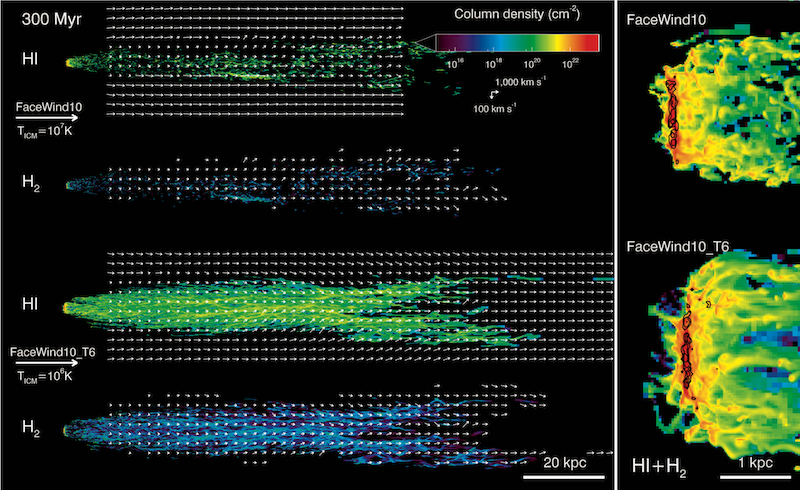
We investigate the impact of ram pressure stripping due to the ICM on star-forming disk galaxies with a multi-phase ISM maintained by strong stellar feedback using radiation-hydrodynamics simulations of an isolated disk galaxy. We find that both star formation quenching and triggering occur in ram pressure-stripped galaxies, depending on the strength of the winds. Turbulent pressure provides support against ram pressure in the central region where star formation is active. However, little star formation is observed in the extraplanar region, indicating that the formation of jellyfish galaxies may require unusual conditions such as a large amount of gas in the disk. (Lee, Kimm, Katz+ 2020)
Origin of low LyC escape in LBGs: metallicity
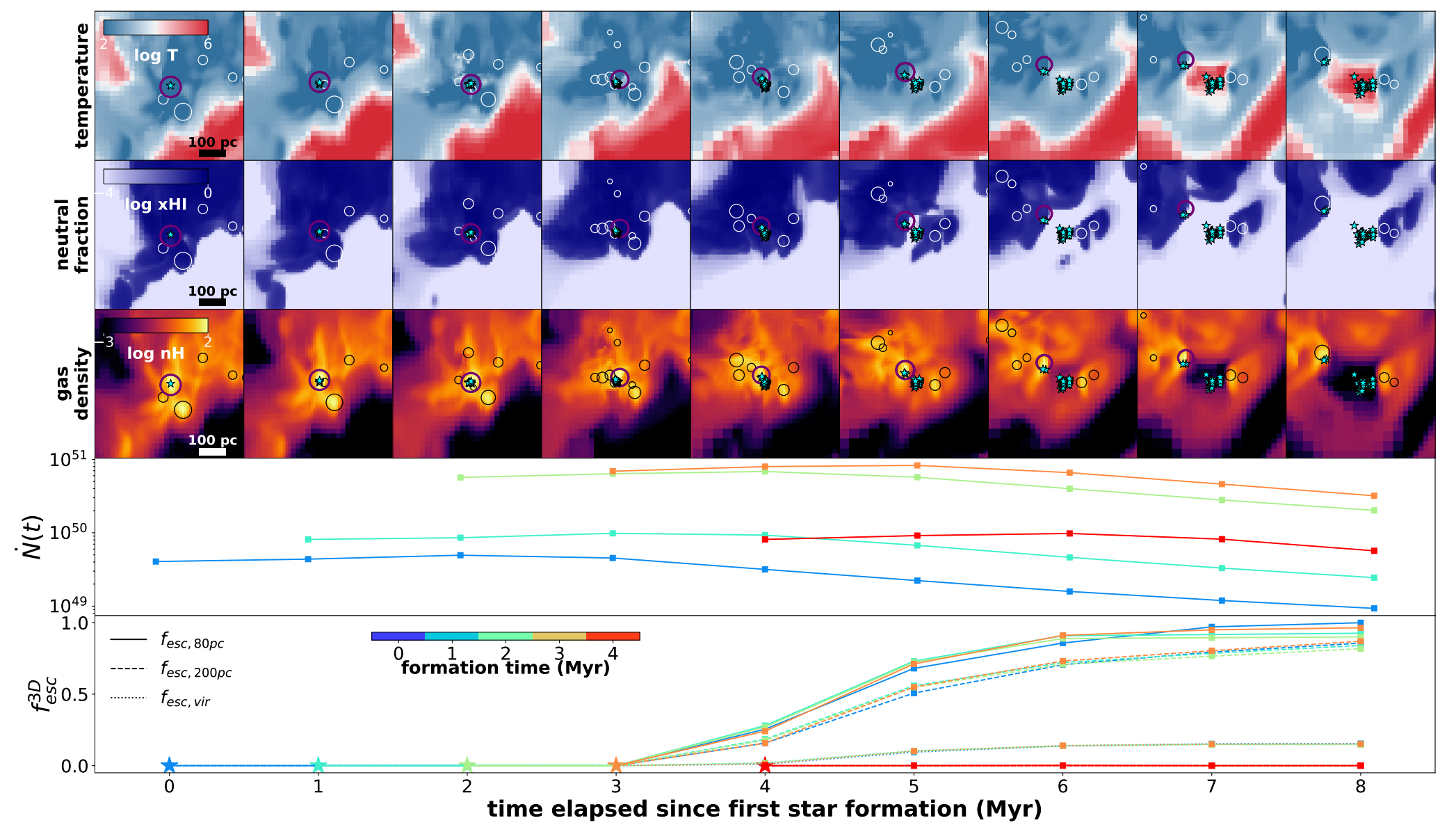
A new probe of turbulent structures: LyC-LyA
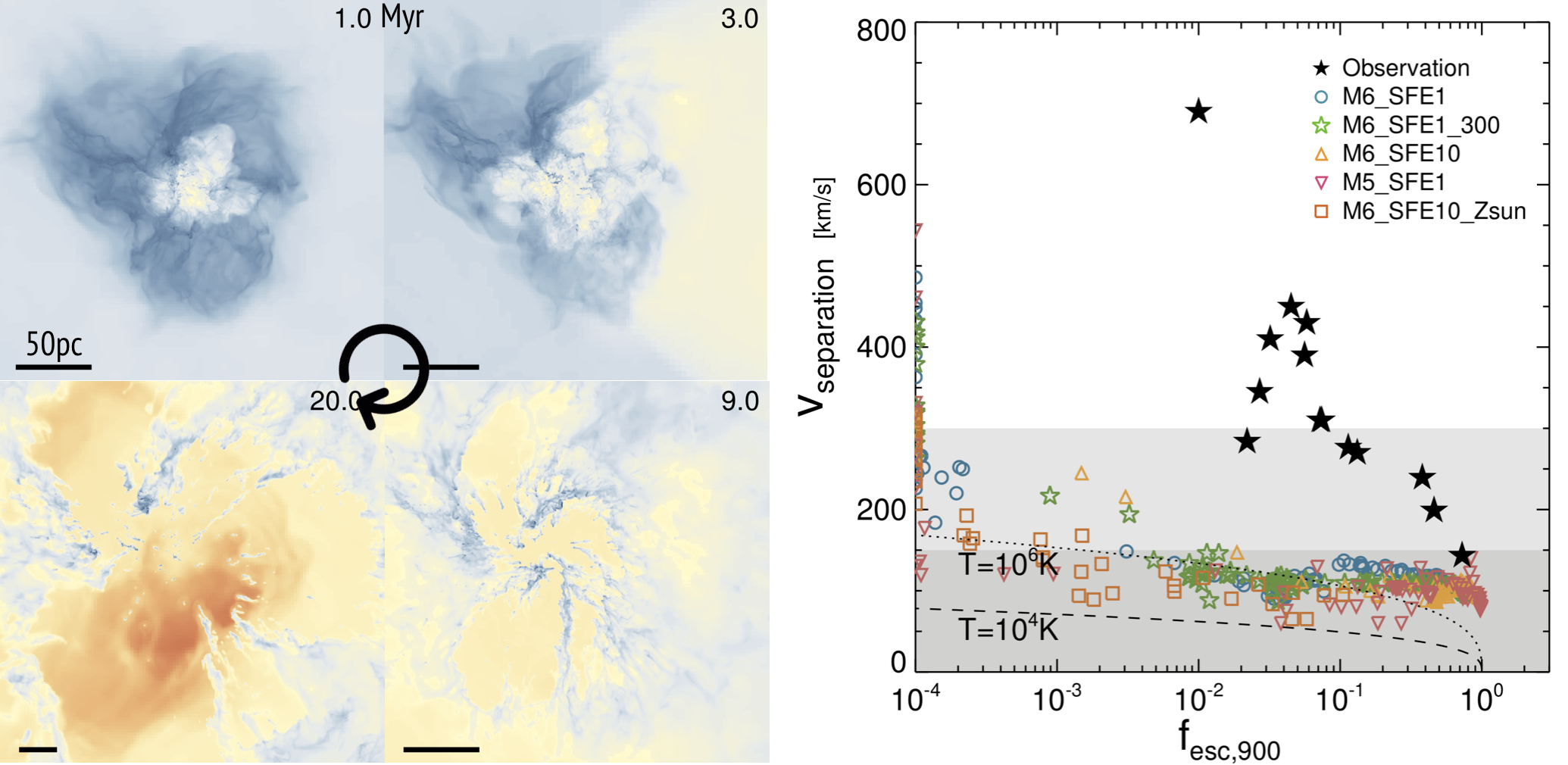
The upcoming large telescope programmes will allow us to study details of kinematic properties of galaxies.
In particular, the propagation of UV radiation will potentially be one of the most useful probes of galaxy evolution:
the escape of LyC photons tells us what fraction of a galaxy is covered by optically thick neutral hydrogen,
whereas the line profile of LyA photons reflects gas kinematics. Thus, understanding both properties simulataneously will be
the next step forward for galaxy formation theory (Kimm et al. 2019, MNRAS).
Lyman alpha pressure in metal-poor environments
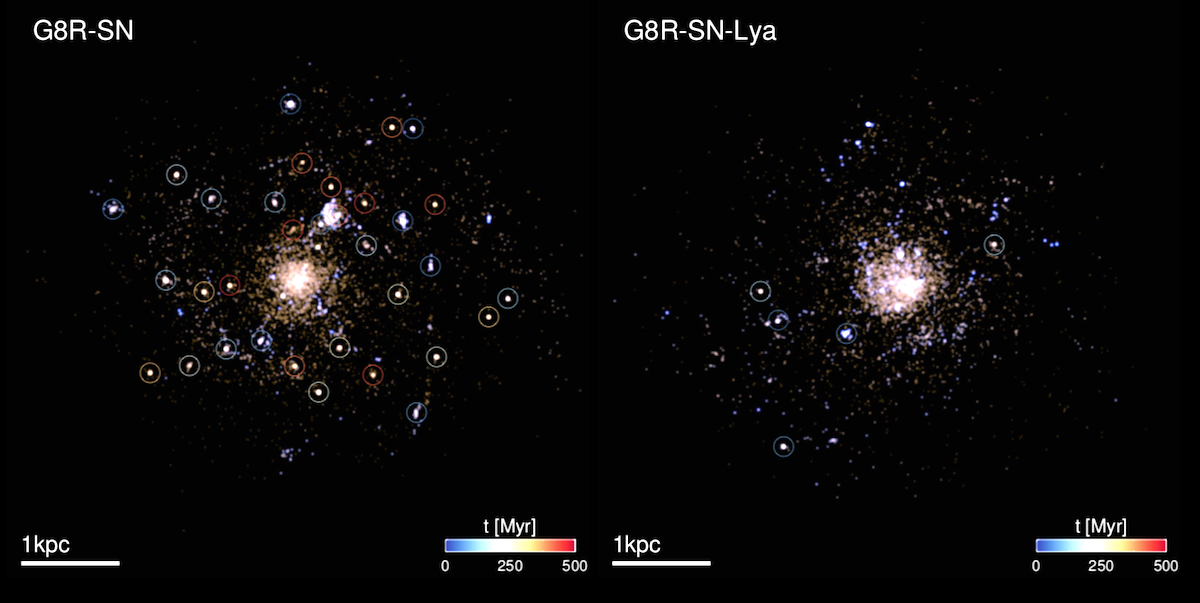
Non-thermal pressure due to resonantly scattering Lyman alpha photons is a form of stellar feedback that has been neglected in galactic simulations.
By carrying out a series of RHD simulations, we find that Lya pressure can impart a significant amount of radial momentum
in the early phase of star formation. This leads to the disruption of star-forming clouds, which modulates
clustered, bursty star formation episodes. As a result, the number of star cluster formed and survived is significantly reduced
in the model with the strong radiation feedback (Kimm et al. 2018).
Binaries accelerate reionization
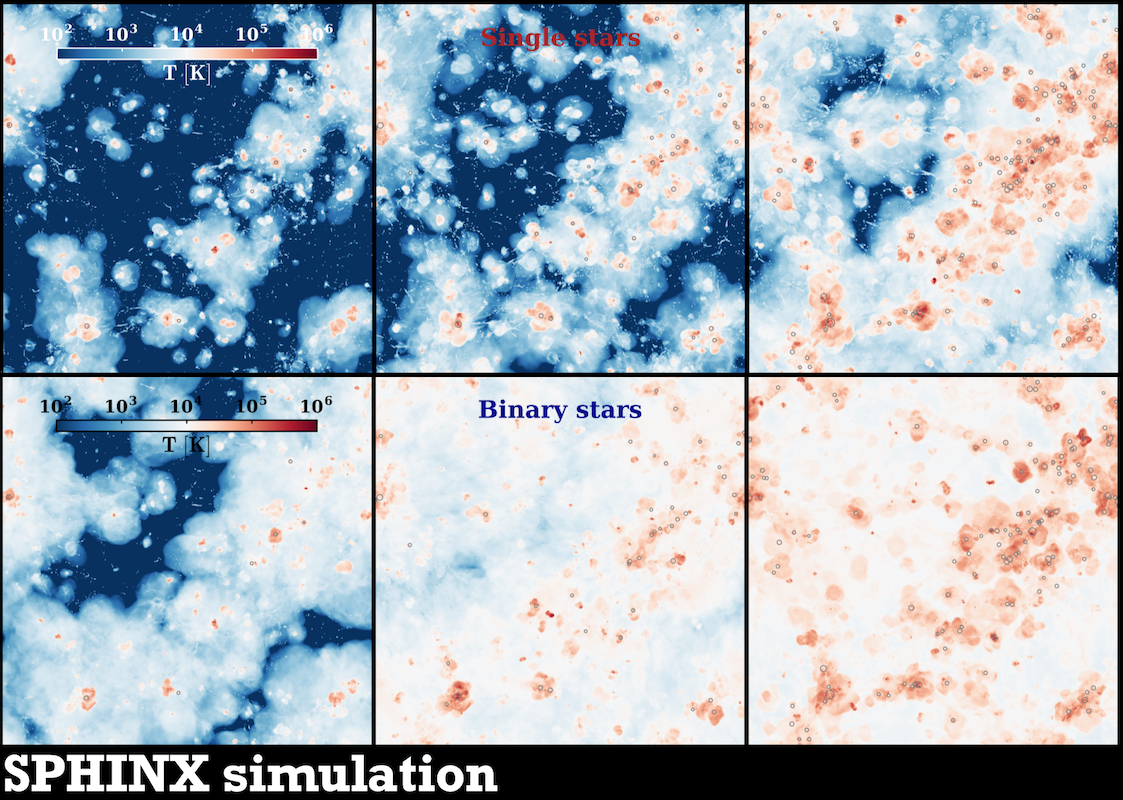
SPHINX is the first radiation-hydrodynamic simulations that simulataneously
capture large-scale reionization and the escape of ionizing radiation from
thousands of galaxies. In this work, we find that
the interactions in a binary system have a signifcant impact on the timing of reionization.
We will use the SPHINX simulations to study the back-reaction of
suppressed galaxy growth via reionization and to predict the observational
properties of extreme-redshift galaxies, which will become increasingly visible to us when the JWST comes online (Rosdahl et al. 2018)..
Magnetic field tracer algorithm
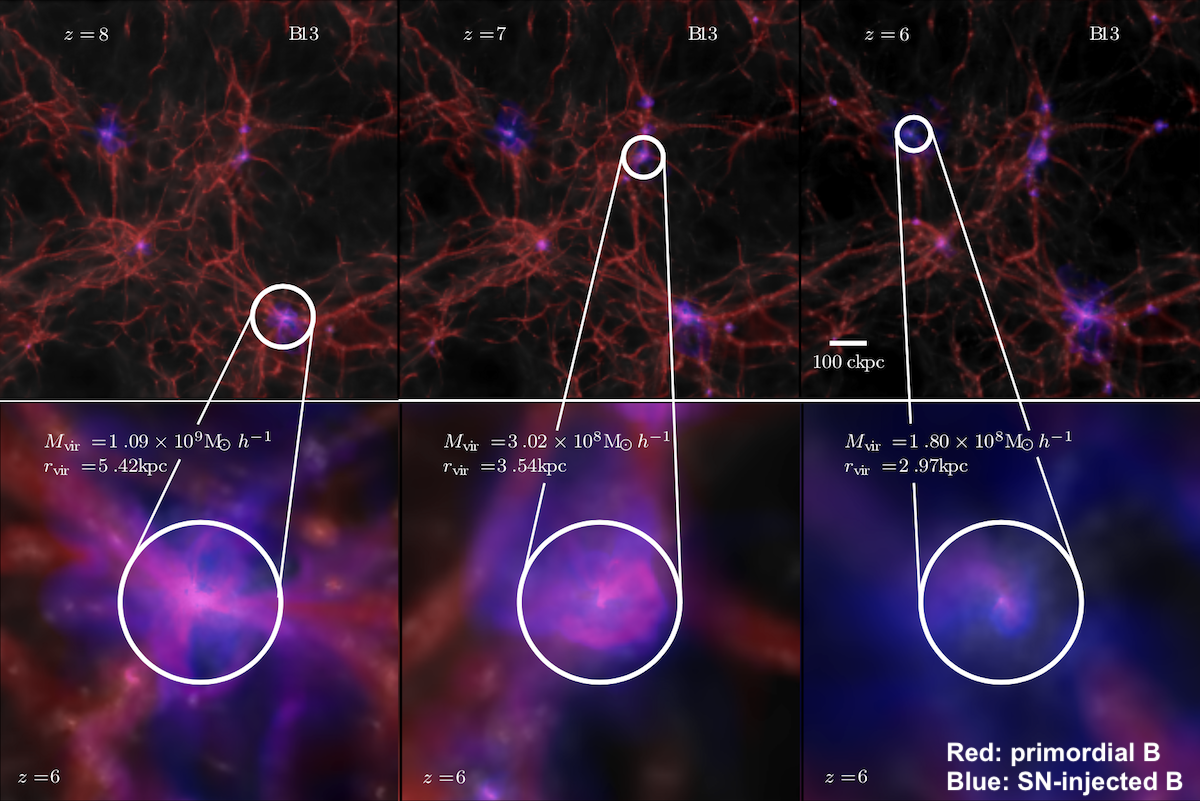
We develop a magnetic field tracer algorithm for cosmological simulations that can track the
origin and evolution of different components of the magnetic field. We find that
primordial magnetic fields dominate the majority of the volume of the simulations,
whereas SN-injected magnetic fields are confined to galaxies and the vicinity of their dark matter haloes by z=6.
These simulations represent a first demonstration of the magnetic field tracer algorithm which will be an important tool
for future cosmological MHD simulations (Katz et al. 2018)
© All rights reserved. | Design by TEMPLATED and modified by Lizzie